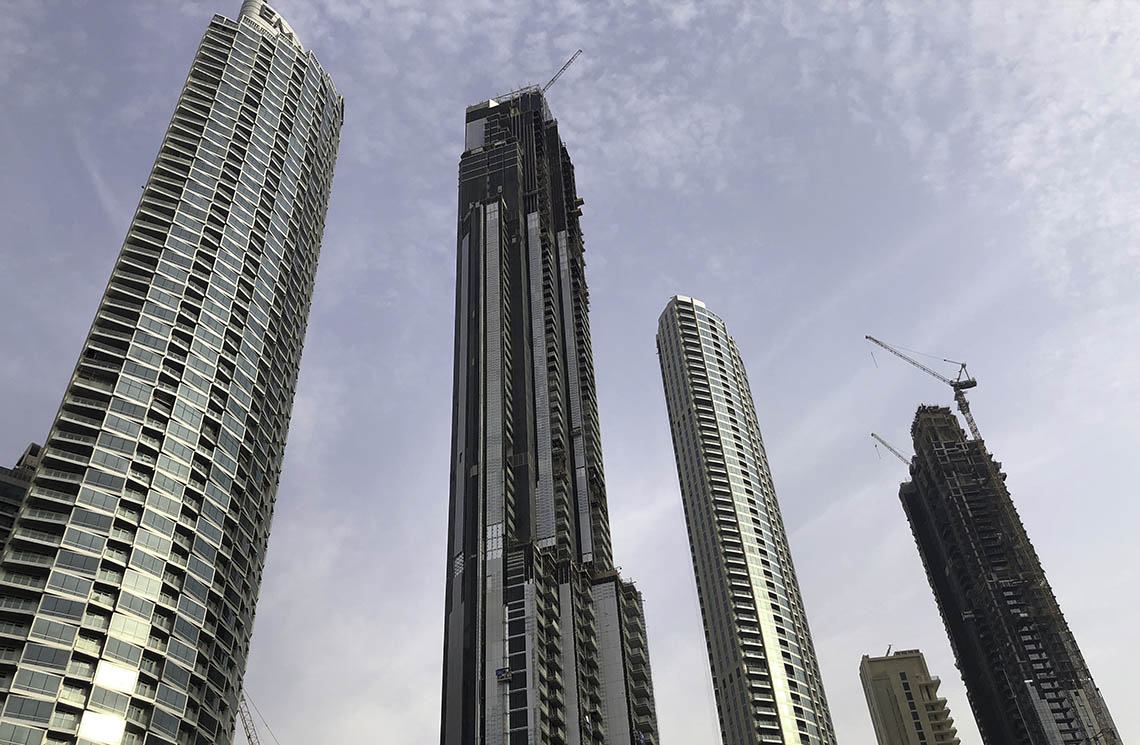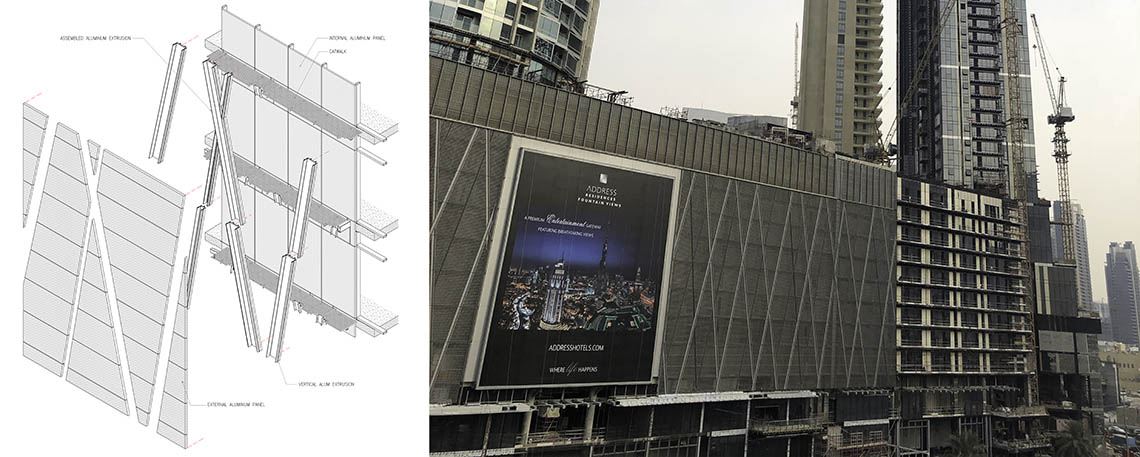Architect: DPA Singapore, Atkins, Dewan
Developer: Emaar
Location: Dubai Downtown
Use: Hotel & Residential
Fountain Views is a new Emaar development in Downtown Dubai consisting of 3 high rise towers - from 40 to 80 floors - set on a large 12 story podium, that will become an extension of the Dubai Mall. The connection link with the mall will features the set-to-be biggest LCD screen in the world.
The development is designed by 3 different architects and the facade works are contracted to 5 different contractors. The envelope of towers 1 and 3, residential buildings, consists of a zig-zagged unitized curtain wall which was quite a challenge in terms of buildability and waterproofing design. Among the others, the scope includes unitized curtain walls, balcony balustrades, perforated metal cladding and glass walls. Koltay Façades is responsible for the full facade engineering scope of the high rise towers and the large retail podium, from schematic to tender stage of the project, followed by site supervision.


THE PODIUM
Fountain Views podium is more than 150 m wide and will host the Dubai mall expansion on ground floor and level 1. The remaining floors will be a car parkings and, on its south-west end, residential units. Its facade is for sure unique: on one side, it was required an adequate air permeability for parking safety reason; on the other, being part a high-end development and directly facing one of most known boulevards in Dubai Downtown, a captivating look was mandatory.
The design we successfully proposed features a perforated double skin with a maintenance catwalk in between.
As requested by the client, the screens perforations dimension and distance was studied so that, while ensuring the required airflow - car headlights in the parking would not be noticeable from the boulevard. Further, having our engineering and design teams worked closely together, the supporting steel structure was integrated in the outer skin, becoming the moat recognizable aesthetic element of the envelope. Finally, the distinctive design led to a faster construction and smaller amount of steel required.

